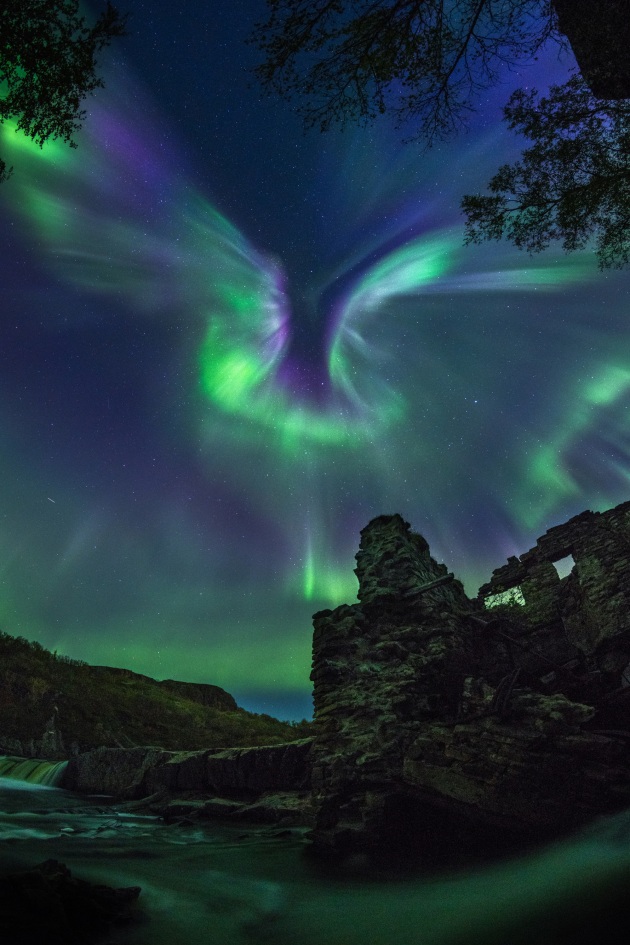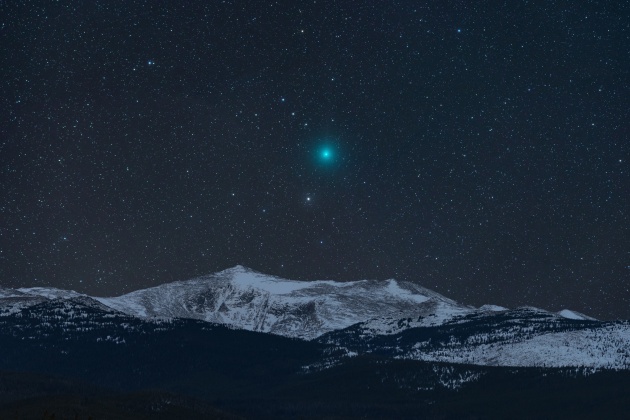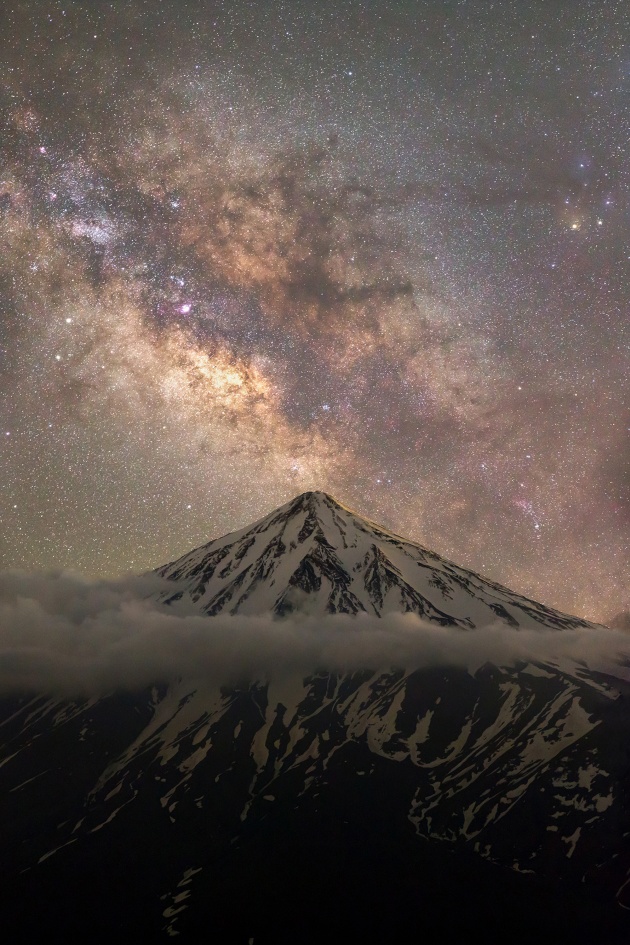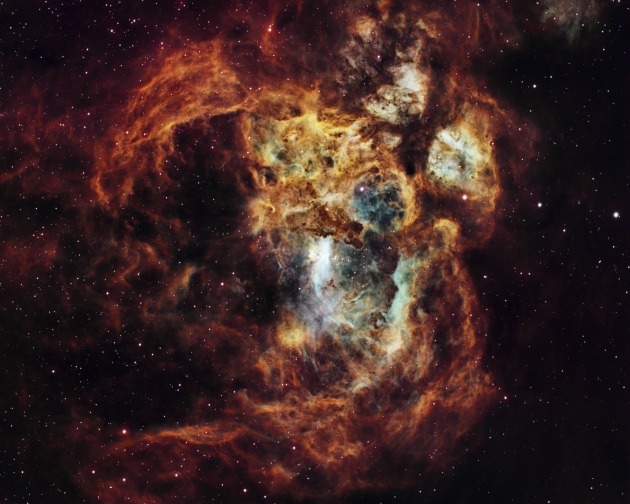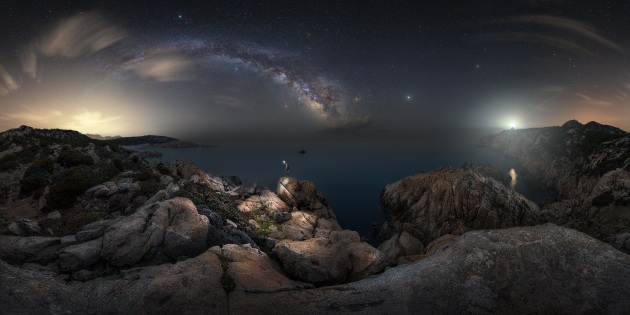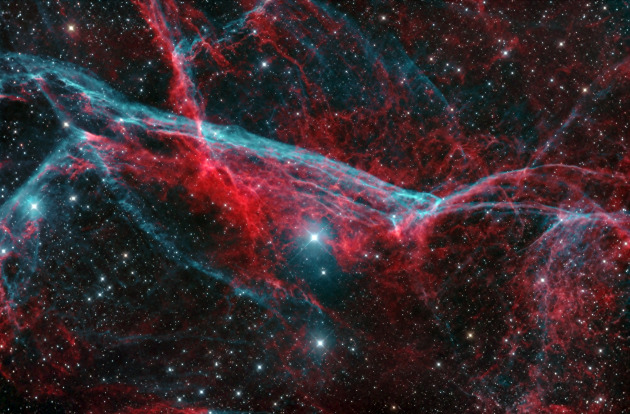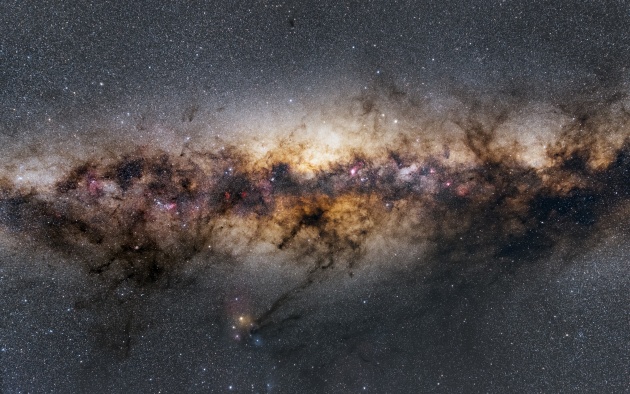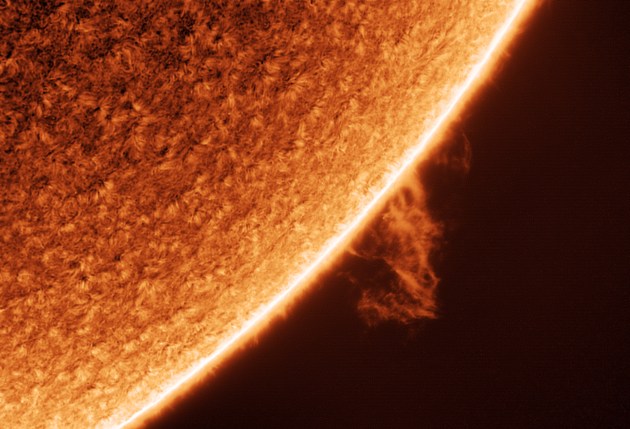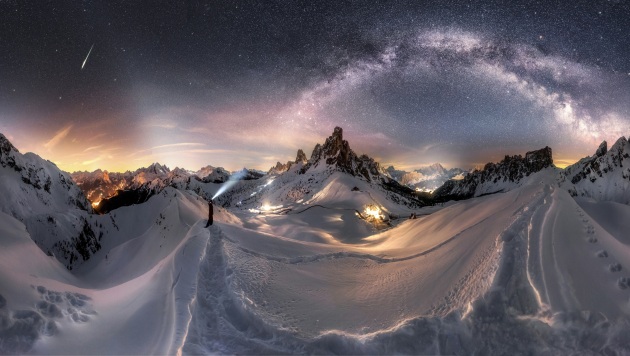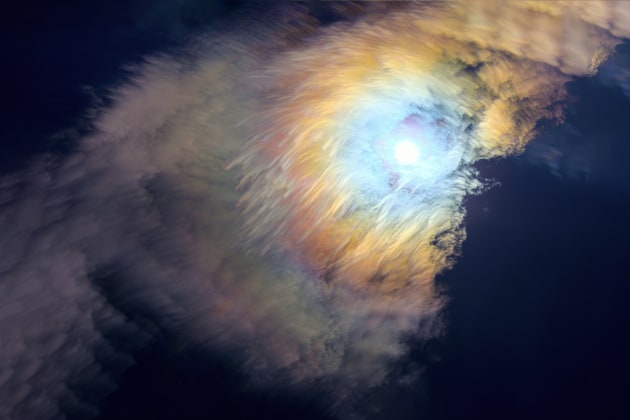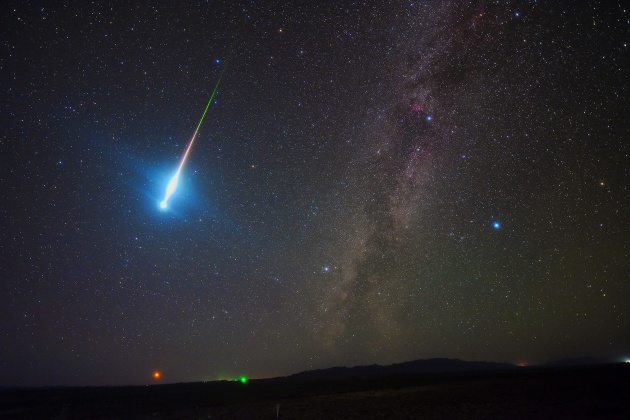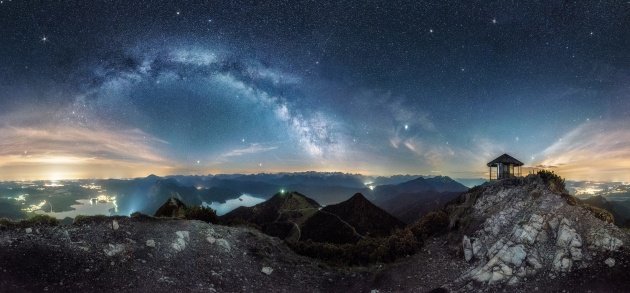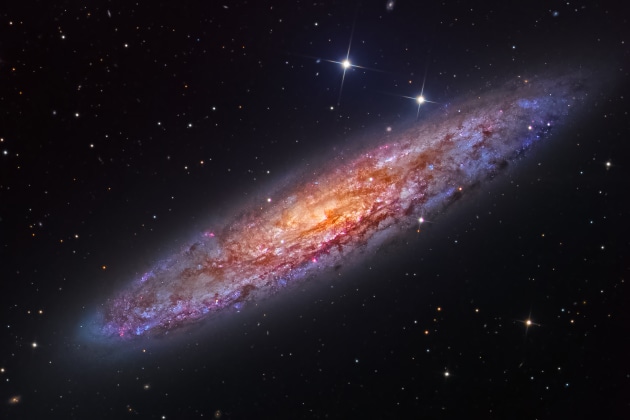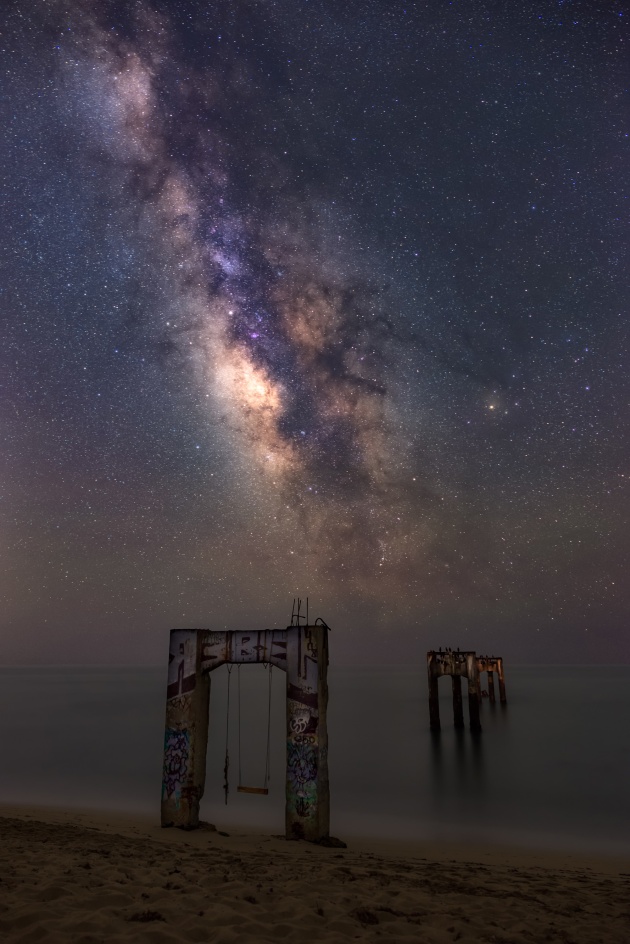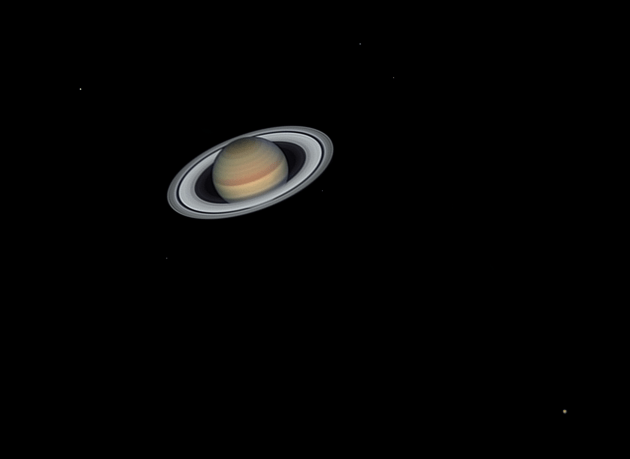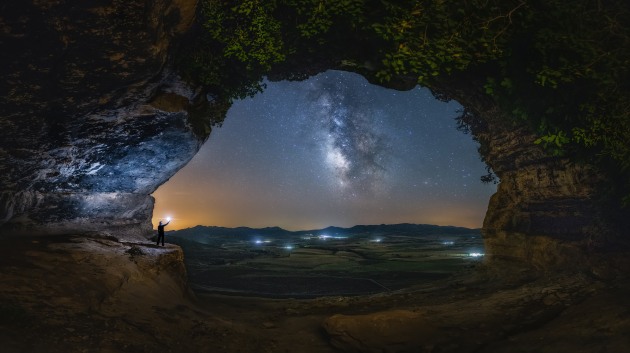Astronomy Photographer of the Year shortlist announced
Run by the Royal Observatory Greenwich, and in association with Insight Investment and BBC Sky at Night Magazine, both professional and amateur photographers were invited to submit their work in the global competition, with over 4,600 entries submitted from 90 countries.
An overall winner will be chosen from the 38 images shared below, with the winner taking home £10,000 ($18,400 AUD).
Winners of the competition will be announced on 12 September and will also be exhibited at London's National Maritime Museum from 13 September 2019.
A Titanium Moon © Miguel Claro (Portugal). Celestron 14” EdgeHD 355 mm Schmidt-Cassegrain reflecting telescope at f/11, Celestron CGEM mount, Nikon D810A camera, ISO 250, 120 x 1/320-second exposures. Albany Milkyway © Yifan Bai (China). Nikon D810 camera, 15 mm f/2.8 lens, ISO 5000, 25 x 30-second exposures Aurora Australis from Beerbarrel Beach © James Stone (Australia). Nikon D750 camera, 15 mm f/3.2 lens, ISO 6400, 10-second exposure. Aurora is a bird © Alexander Stepanenko (Russia). Nikon D850 camera, 12 mm f/2.8 lens, ISO 1600, 4-second exposure. Aurora like phoenix © Wang Zheng (China). Sony ILCE-7R2 camera, 12mm f/2.8 lens, ISO 6400, 8-second exposure. Aurora outside the tiny cave © Sutie Yang (China). Nikon D850 camera, 14 mm f/2 lens, ISO 1250, 18 x 4-second exposures. Bloodborne © Keijo Laitala (Finland). Olympus OM-D E-M5 camera, 150 mm f/7.1 lens, ISO 400, 4-second exposure. Catching Light © Jason Perry (USA). Nikon D850 camera, 14 mm f/2.8 lens, ISO 6400, 9 x 25-second exposures. Comet and Mountain © Kevin Palmer (USA). Nikon D750 camera, iOptron Sky-Tracker mount, Nikon 180mm f/2.8 lens at 180 mm f/5, ISO 1000. Coming in to land at Mare Crisium Spaceport! © Bud Martin Budzynski (UK). Celestron C11 279mm Schmidt-Cassegrain reflecting telescope at F/10, IR filter, Celestron CGX mount, FLIR (Point Grey) Grasshopper3 mono camera, multiple stacked exposures. Dancing in the Goðafoss © Sutie Yang (China). Nikon D850 camera, 14 mm lens. Sky: f/1.8, ISO 2000, 8-second exposure. Foreground: f/2.8, ISO 1600, 30-second exposure. Deep in the Heart of Mordor – NGC 7293 © Andrew Campbell (Australia). GSO RC8CF 200 mm Ritchey-Chretien reflecting telescope at f/5.8, Sky-Watcher EQ6 Pro mount, QSI 683 WSG 8 camera, HDR RGB-Ha-OIII composite, 63 hours 58 minutes total exposure. Depth and height, Ngc7822 Devil's Head nebulae-komplex © László Bagi (Hungary). Custom-built Astrographic Newtonian reflecting telescope at f/4, Astronomik 6 nm Ha, OIII, SII, RGB filters, Sky-Watcher NEQ 6 Pro mount, Atik One 6 CCD Mono camera, L-RGB-Ha-SII-OIII composite, 29-hour total exposure. Embrace of the mountains, heart of the universe! © Majid Ghohroodi (Iran). Canon EOS 6D camera, 59 mm f/2.8 lens, ISO 6400, 4 x 10-second exposures. Fiery Lobster Nebula © Suavi Lipinski (Australia). CFF 105 mm apochromatic refractor telescope at f/6, Astrodon 3 nm narrowband filters, Astro-Physics Mach1GTO mount, QSI 690 WSG-8 camera, narrowband composite, 32-hour total exposure. First of All © Alessandro Cantarelli (Italy). Canon EOS 5D Mark IV camera, 12 mm f/4 lens. Sky: ISO 800, 300-second exposure Foreground: ISO 1600, 10-second exposure. Grand Finale © Gordon Mackie (UK). Canon EOS 760D camera, 20 mm f/3.5 lens, ISO 800, 6-second exposure. Gum 12 © Eddie Trimarchi (Australia). GSO RC10 250 mm Ritchey-Chretien reflecting telescope at f/6.4, Baader Ha and OIII filters, Sky-Watcher EQ6 mount, Moravian G3-11000 camera, Ha-OIII composite, 30-hour total exposure. Milky Way Centre © Péter Feltóti (Hungary). Canon EOS 6D astro-modified camera, Canon EF 24-70mm f/2.8L II USM lens at 24 mm f/2.8, ISO 6400, 24 x 10-second exposures. Orion © Raul Villaverde Fraile (Spain). Takahashi FSQ-106ED 106mm apochromatic refractor telescope at F/4, IDAS LPS and Baader Ha 7 nm filters, Sky-Watcher EQ6 Pro mount, Canon 6D camera, ISO 1600, nine-panel mosaic, RGB-Ha composite, 33 hours 45 minutes total exposure. Our Moon © Tom Mogford (UK). Celestron 8” EdgeHD 200 mm Schmidt-Cassegrain reflecting telescope at f/10, Celestron AVX mount, ZWO ASI178MC camera, mosaic of multiple stacked exposures. Out on a Limb © Alastair Woodward (UK). Sky-Watcher Evostar 120 mm refractor telescope at f/35, Daystar QUARK Chromosphere Hydrogen Alpha Eyepiece filter, Sky-Watcher HEQ5 Pro GoTo mount, FLIR Blackfly Mono CMOS (IMX249) camera, Quark telecentric 4.2x Barlow lens, 1200 x 0.025-second exposures. Polar © Xiuquan Zhang (China). Canon EOS 5D Mark IV camera, 14 mm f/2 lens, ISO 10000, 4-second exposure Reflections of aurorae and meteors © Angel Yu (China). Canon EOS 5D Mark IV camera, 14 mm f/1.8 lens, ISO 5000, 10-second exposure. Road to glory © Nicolai Brügger (Germany). Nikon D810 camera, 15 mm f/2.8 lens, ISO 1600 (foreground), ISO 5000 (sky), 30 x 20-second exposures. Reflections of Mount Hooker © Marc Toso (USA). Nikon D810A camera, 24 mm f/2 lens, ISO 6400, 50 x 20-second exposures Seven-colour feather of the moon © Yiming Li (China). Canon EOS 6D camera, 100 mm f/2.8 lens, ISO 400, 50 x 1-second exposures. The Perseid Fireball 2018 © Zhengye Tang (China). Nikon D810A camera, 14 mm f/1.8 lens, ISO 6400, 10-second exposure. View Point © Nicolai Brügger (Germany). Nikon D810 camera, 15 mm f/2.8 lens, ISO 5000, 33 x 20-second exposures. The Sculptor Galaxy © Bernard Miller, Martin Pugh (USA). Planewave CDK-17 432 mm Dall-Kirkham reflecting telescope at f/6.8, Paramount ME mount, SBIG STXL-11002 camera, L-RGB-Ha composite, 13 hours 10 minutes total exposure. The Running Man Nebula © Steven Mohr (Australia).Planewave CDK12.5 318 mm Dall-Kirkham reflecting telescope at f/8, Astrodon LRGB and Baader Ha filters, Astrophysics AP900 mount, SBIG STXL11002 camera, L-RGB-Ha composite, 39-hour total exposure. The Remnants © Marcin Zajac (Poland). Nikon D600 camera, 24 mm f/1.4 lens, ISO 1600, 15-second exposure. The Lord of the rings and his court © Jordi Delpeix Borrell (Spain). Celestron C14 355mm Schmidt-Cassegrain reflecting telescope at f/30, Sky-Watcher EQ6 Pro mount, ZWO ASI174MM camera, multiple 50-millisecond exposures. The Carina Nebula © Petar Babić (Croatia). iTelescope T9 Tele Vue NP127 127 mm apochromatic refractor telescope at f/5.6, 10Micron 2000 HPS mount, FLI ProLine 16803 camera, Ha-OIII-SII composite, 3 hours 30 minutes total exposure. Sharafkhaneh port and lake Urmia © Masoud Ghadiri (Iran). Nikon D850 camera, Vixen Polarie mount, 24 mm f/4 lens, ISO 3200, 60-second exposure. Silent Spring Sun © Alan Friedman (USA). Astro-Physics F5 Stowaway telescope, Coronado SolarMax 90 mm etalon filter, Astro-Physics German Equatorial mount, Point Grey Research Grasshopper camera, 900 mm 90 mm telescope f/10 lens, 1/1000-second exposure. The last of us 2.0 © David Ros Garcia (Spain). Canon 6D camera, 15 mm f/2.5 lens, ISO 6400, 5 x 25-second exposures. The Horsehead and Flame Nebula © Connor Matherne (USA). Takahashi TOA-150 150 mm apochromatic refractor telescope at f/7.3, FLI filters, Astro-Physics AP 1600 mount, FLI ML16200 camera, L-RGB composite, 26-hour total exposure



